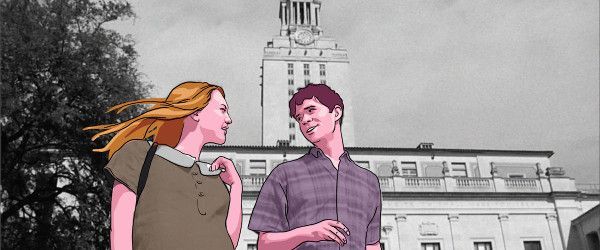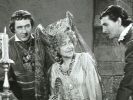Eye For Film >> Movies >> Tower Of London (1962) Film Review

What do we know about Richard III? The established facts are few. The legend looms large. History is written by the winners and fictionalised by their patronees; as the red rose enclosed the white, Shakespeare duly delivered a monster, telling tales of deformity (probably true) and murder (possibly not). The literary Richard embodies together a collection of 16th Century terrors, becoming cartoonish, more symbol than man. He is properly the stuff of horror fiction. He is a natural subject for Roger Corman.
He is a natural subject, too, for Vincent Price, who brings the full force of his training in classical theatre to the role. This is not Shakespeare's Richard but a caricature thereof, one step further removed. A host of other Shakespearean troubles surround him, from dark prophecies to vengeful ghosts. It's hard to imagine any other actor succeeding in filling the role. Though he camps it up to suit Corman's style, Price succeeds in bringing a note of pathos to his performance, so that viewers can enjoy Richard as a villain yet still retain sympathy for him. Starring in almost every scene, he carries the film on his twisted shoulders. It was a rushed production, shot on sets left over from The Pit And The Pendulum and filmed in black and white for financial reasons. It looks rough, but Price is compelling.

The limited budget gives the film a theatrical quality even though there's quite a bit of moving around. There was little money with which to pay extras so the battle scenes are filmed in close up, even Bosworth Field looking more like someone's back garden. The smallness of the outdoor vistas gives the final section of the film a dreamlike quality that recalls Corman's much more polished work in The Masque Of The Red Death. It reflects the ambiguity of earlier scenes - the ghosts and the sense that Richard might be losing his mind. One way of another, he's a haunted man.
In and around this artier work, some of which inadvertently slides into comedy, there is the gleeful sadism that by this time audiences had come to expect from the wok of Corman and Price. Simple murder is carried out with Shakespearean elegance but the torture of a tight-lipped young woman provides an opportunity to bring out the pillory and the rack. Another scene recalls Winston's suffering in 1984, so the film may be off limits to people with murophobia. One can only imagine what Corman might have made of this in colour.
With so many difficulties, this is not the director's finest work, but it will appeal to those who enjoyed his Poe adaptations and it is indisputably entertaining. He manages to squeeze in a signature raven, but where his previous work with Price thundered, this film is reduced to gently rapping.
Reviewed on: 09 Feb 2017
















